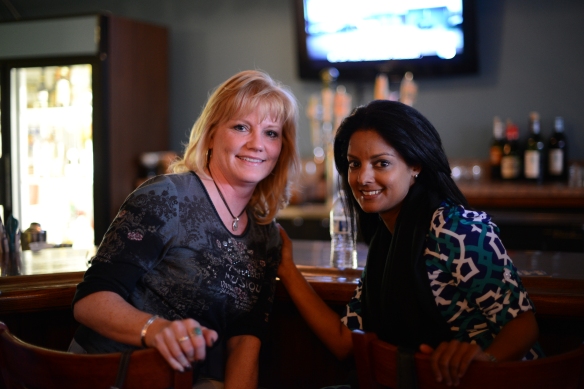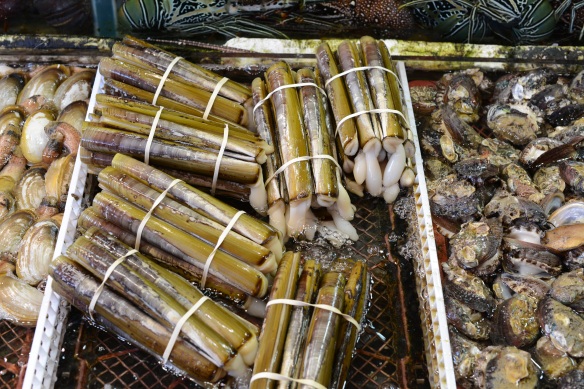I’m in Houston, and I’m eating a lot, immersing myself into this sprawling city’s culinary offerings. Angela and I have dined at several places recently, and I have been solo at some others. With one exception – Triniti – the food has been good, some of it very good, including an excellent snapper at Reef and some wonderful Thai (including a soft shell crab) in the waterside town of Seabrook, south of Houston toward Galveston. Angela especially loved her scallop and shrimp curry there, and the evening ended up at the bar with two of the town’s finest, one of who gave us his recommendations, which included a sushi place in Houston.
Yesterday for lunch I had tacos at Tacos A Go-Go … pork and chicken guisado (stewed). Perfect bites, long, slow cooking, corn tortillas. All for $4.00. Last night Chris Stanton, a friend and former colleague of mine from the Abu Dhabi and Dubai days, and I shared a table at Provisions, and the meal began with Bone Marrow Brioche/Tomato Jam/sheep’s cheese, followed by Ham O’ Day (a prosciutto from America’s Midwest).
I would have liked more marrow and marrow taste in the bread pairing, an opinion that Chris shared, and the tomato jam was a tad too sweet, but the cheese was excellent – a bit crumbly, soft mouth feel, slightly creamy yet pungent. The ham, which came atop a light mustard sauce, imparted a salty taste at the back of the palate, which at first Chris and I did not like. But then a funkiness set in, and that made us hunger for more. We agreed that the curing was carried out well, and we were happy.
We were drinking a 2008 Bodegas Aster Crianza, and the ham’s funkiness enhanced its taste. At $32 a bottle it is one of the least expensive wines on Provisions’ list, and is a good value.
To the lamb. And to Korea, because that’s the first thing my brain thought of when I put one of the ribs in my mouth. They were crisp on the outside, and fairly tender meat was underneath. Unfortunately they were overly sweet. We tasted plum and brown sugar, and I would swear that some molasses was in the mix. We wanted less sugar, richer meat. But that did not stop us from finishing the dish. (We turned our attention to the paté before we finished the ribs, and when we returned to them they had cooled off, which enhanced their taste. They were better close to cold.)
A first bite of the rabbit paté told us that, while excellent, it should never be ordered with the lamb ribs. Pea tendrils graced the top of the rabbit, and a bite of that dish, followed by a taste of the ribs, took us from the freshness of spring to a brisk and smoky autumn evening. Too jarring, too discordant. Both great plates, but if they eloped their romance would never last.
Chris and I shared an apartment in Abu Dhabi in 2008, and when I first met him I considered myself very fortunate, because he loves food, and he loves to cook. And he is a good cook, intuitive. We teamed up well in our kitchen, and produced some great plates together, including a salmon tartare cone (thank you, Thomas Keller) and, with the help of his parents, a wonderful Thanksgiving dinner for 14.
During our dinner at Provisions Chris asked me as we were eating the ham how much I knew about curing meat, and told me that a visit to the Staten Island home of a friend of his father’s marked the beginning of his passion for food. Chris was 8, and they made fresh pasta and sliced some homemade prosciutto and drank some wine made by a grandfather from Italy. Chris showed me a photo of the salumeria in that Staten Island home, and I share it with you. (Please notice the crucifix at the upper left of this photo. It is indeed blessed meat.)
I replied that I knew a lot about the process of aging and curing, but other than dry-aging a steak I have never had the opportunity nor time to do it. That is going to change, however, and Chris and I are making plans to create a salumeria of our own, so stay tuned.



































































Recent Comments